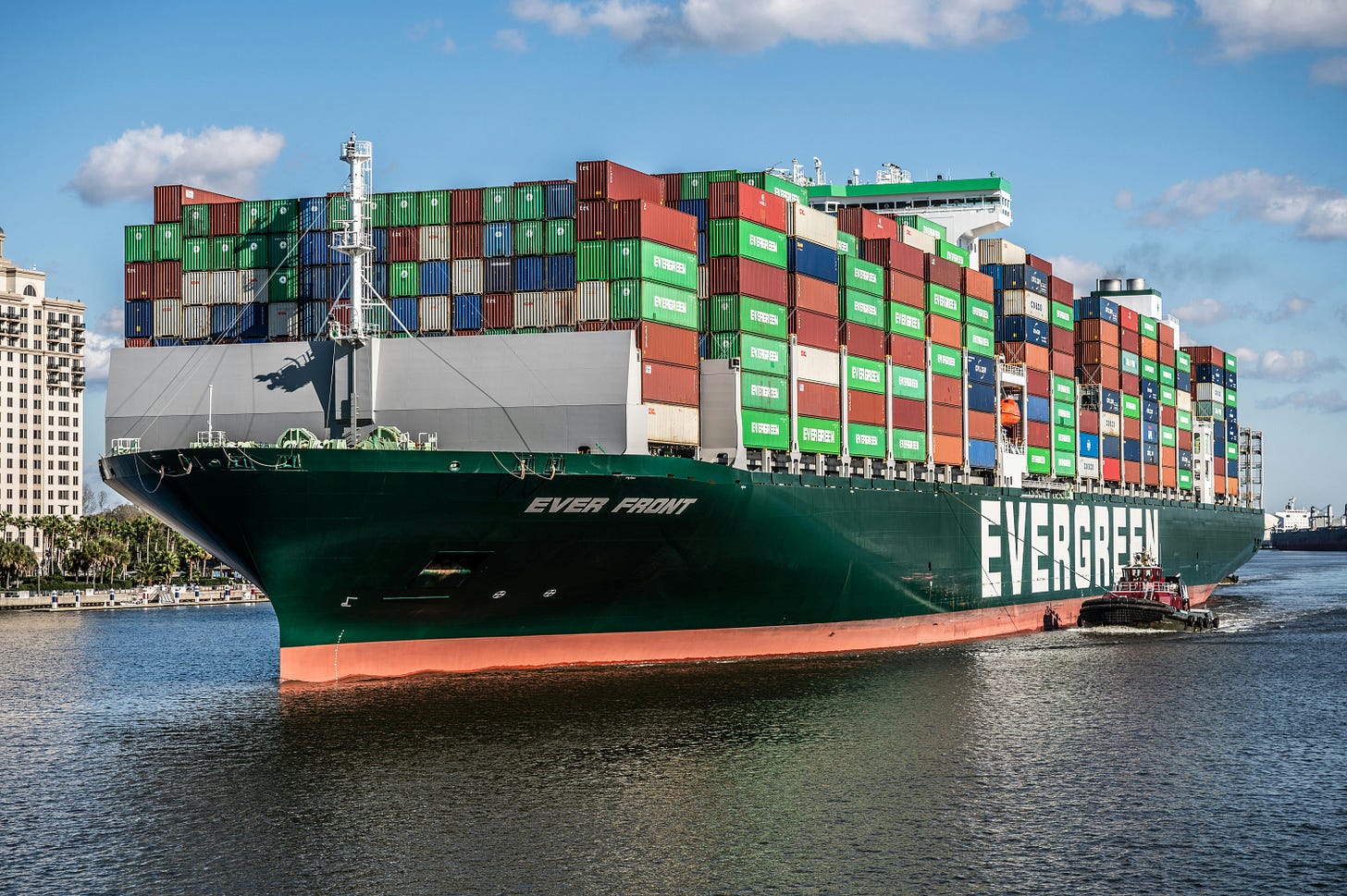Strategy before partnerships
The lesson from Trump's tariffs
From the very beginning, I made clear This for That (TfT) would cover partnerships from different angles. Since 2020, I’ve looked beyond the technology industry and highlighted perspectives on partnerships from national intelligence, journalism, venture capital, non-profits and more.
Today I’m highlighting Trump’s tariffs because trade impacts each of us and trade alliances are some of the most consequential partnerships of all. I see lessons here that apply to anyone forging partnerships.
But TfT is not turning into political punditry.
As the value of my stock portfolio sunk lower and lower in the wake of Trump’s tariffs, I did what I typically do in the face of global panic. I scrolled for some glimmer of hope.
What I found instead was an alternative scenario for how events could have unfolded differently. In his NYTimes column, Tom Friedman wrote this:
“When you have a country as big as China … the only way to negotiate is with leverage on our side of the table. And the best way to get leverage would have been for Trump to enlist our allies in the European Union, Japan, South Korea, Singapore, Brazil, Vietnam, Canada, Mexico, India, Australia and Indonesia into a united front. Make it a negotiation of the whole world versus China.
Then you say to Beijing: All of us will gradually raise our tariffs on your exports over the next two years to pressure you to shift from your export economy to a more domestic-oriented one. But we will also invite you to build factories and supply chains in our countries — 50-50 joint ventures — to transfer your expertise back to us the way you compelled us to do for you. We don’t want a bifurcated world. It will be less prosperous for all and less stable.
This approach harnesses the alliances the United States has cultivated for decades. It also invites China to participate in a solution aimed at achieving shared objectives. This line in particular stands out:
“We don’t want a bifurcated world. It will be less prosperous for all and less stable.”
The leaders of China and the United States differ on many issues but one thing is certain - they both want prosperity and stability.
Friedman’s view is similar to Peter Orszag, the CEO of Lazard, one of the world’s preeminent financial services firms. He recently shared this:
If your goal is to de-risk or isolate China, what you want to do is have North America and Europe together and reach some common purpose on what you’re trying to do. Because the throw weight of that combined entity is so large that it will affect everything else that happens in the global economy.
Professor Rush Doshi, an expert on China at Georgetown University’s School of Foreign Service, recently proposed a new, alliance trade strategy in an essay “Underestimating China.” He writes:
“China possesses scale, and the United States does not - at least not by itself. Because its only viable path lies in coalition with others, Washington would be particularly unwise to go it alone in a complex global competition.”
Whether or not you agree with Friedman, Orszag and Doshi, the strategy they advocate for is clear - alliances are the best way to gain leverage against China.
This highlights a fundamental problem with Trump’s tariffs.
What is the strategy?
It is clear that Trump likes tariffs. But what is his strategy?
Why a 25% tariff on Canada? Why a 50% tariff on Lesotho, a country whose economy is smaller than that of Duluth, Iowa?
What problem is Trump trying to solve?
Generate revenue?
Bolster national security?
Reshore U.S. manufacturing?
Gain leverage in order to lower tariffs?
Some of these objectives are in direct conflict with each other.
Even some of Trump’s conservative supporters, like economist Oren Cass, have called for more clear messaging, “The American people, markets, and allies all need to understand what is happening and why if they are to support or at least accept the administration’s plan.”
Maybe Trump is keeping the answer to these questions close to the vest as a negotiating tactic. Or maybe he is just figuring out a plan in real-time.
Strategy before partnerships
Whether negotiating with another country or another company, the first question is the same: what is our objective?
In technology, partnerships tend to help to achieve a few of objectives - (1) acquire new customers, (2) retain customers longer, (3) enhance the product or (4) drive awareness.
For example, Shopify’s objective is to make it simple for businesses to sell online. To achieve this, Shopify needs a seamless solution for online payments. That is why Shopify relies on a partner - Stripe. Shopify’s partnership with Stripe enhances Shopify’s product and retains customers longer.
This Shopify / Stripe example makes strategy sound easy. In reality, strategy is arduous. Before partnering with Stripe, Shopify had to decide whether to build their own payment solution. Or buy an existing payment solution. Or partner with another payment provider, like Paypal or Adyen.
To be successful, partnership leaders must be immersed in corporate and product strategy. If your company or product lacks a clear strategy, you need to help craft it. If your partner does not tie directly into your one of your company or product’s top strategic priorities, you should focus on other partners.
Partnerships may be your remit and your job title but strategy is central to your success.
Strategy before partnerships.
For more info
Cited above
Tom Friedman: What Trump Just Cost America
Rush Doshi: Underestimating China
Trump’s tariffs
Debate - Economists panel
Support - Oren Cass: Happy Liberation Day to Those Who Celebrate
Criticism - Noahopinion: All the arguments for Trump's tariffs are wrong and bad
Comedic criticism - John Oliver, Last Week Tonight
Predictions - Henry Blodget: Playing out Trump's game of tariff chicken...


